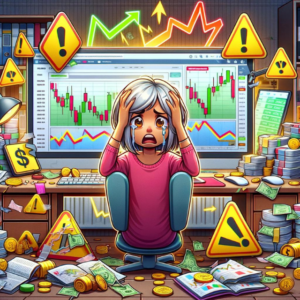7 Trading Terms and Definitions You Need to Know
Benefits And Risks
In any marketplace, more opportunities tend to come with more risks. This is especially true for the foreign exchange market. Forex trading for beginners requires a lot of study and practice to get past the learning curve – it’s not uncommon to blow your account up or be completely wiped out in one trade if you take on substantial risk without hedging your bets. Before getting into the Forex market, consider taking a Forex trading for beginners course to get the information and education you need. Trial and error is not an advisable learning strategy!
The Forex Market Is Active 24 Hours A Day
One of the benefits of Forex trading compared to the stock market is that the market is open 24 hours, five days a week. This allows you to trade at times that are convenient to you. The Forex market is global, and the opening hours of some of the largest banks in the world mean you can be anywhere at any time and have access to a massive volume of trading.
Bigger Movement In Price
The massive amount of volume also means more volatility for the Forex market. Volatility happens when the market sees big swings either up or down in price. These big price swings will translate into more significant profits if the trade goes in your direction. However, it also substantially raises the risk of losing money when the transaction does not go as planned.
Profits Can Be Made On Any Direction The Market Takes
Most people who are new to the Forex market don’t know that you can make profits whether the market is going up or down. This is an important strategy piece to be aware of for Forex trading for beginners. Because you are trading pairs of currencies, you can long or short by buying or selling one currency against the other. You can also mitigate your risk by doing both. A profit calculator is immensely valuable for Forex trading for beginners to see how a trade might play out in real-time when choosing how much to short or buy or when evaluating a spread strategy.
Buy-In With Less Capital
Another aspect that attracts Forex trading for beginners is that foreign exchange pairs allow you to trade with a large amount of leverage. You are often only required to put down a small deposit towards trade and then can reap the total rewards if it goes your way. This is attractive to many Forex traders because they may not have large amounts of money to start. The downside is that your losses can be amplified if the trade moves in the opposite direction.
Learning Forex Begins With Understanding Basic Concepts
A Forex trading for beginners course is the fastest and safest way to learn about trading currencies successfully. Forex is much more complex than the traditional stock market. Many factors affect the Forex market. Currency is much more sensitive to both micro and macroeconomic statistics. Geopolitical events, inflation, trade deficits, and even the stock market’s performance will affect how currencies are traded and their price swings. As a beginner, it’s always good to plug your trades into a profit calculator to see how price movement will affect your profits or losses.
Here are some key terms and their definitions to familiarise yourself with to make your learning easier, better understand the market, and make the most of your trades:
Basic Terms To Know
- Base Currency – Base Currency refers to the first currency listed in a pair. It will be shown as a number on top of another, which is sometimes called the numerator. For example, if your currency pair is USD/Euro, the Base Currency will be the United States Dollar or USD.
- Quote Currency – A Quote Currency refers to the currency listed after the Base. It is shown beside the Base or beneath it, which is sometimes referred to as the denominator. If you are trading the currency pair USD/Euro, then Euro will be the Quote Currency.
- Pip – A Pip denotes the smallest whole unit increment of pricing for any currency pair. The Pip is the measurement that a currency pair increases or decreases, showing you the price movement over time. One Pip generally equals 1/100 of 1%, which can also be represented as .0001.
- Bid Price – The Bid Price is the price buyers are willing to pay for a currency pair.
- Ask Price – The Ask Price is the price sellers of a currency pair are willing to accept.
- Bid/Ask Spread – As with the stock market, market makers (typically brokers) provide the Forex market with liquidity by matching buyers with sellers and vice versa. They charge money to do so. The amount between the Bid Price and Ask Price is paid to market makers as commission for their services.
- Forex Profit Calculator – A profit calculator shows you how many Pips a given currency pair represents once you have input the needed information. It also shows you the profit or loss of the trade at any given time. The complexities of trading currency pairs will make a profit calculator invaluable to beginners.
Trade Smarter
The seven terms above are only the most basic that every Forex trader should know. Familiarising yourself with them before you begin taking online courses in Forex trading will make the learning process much smoother. For a comprehensive Forex education that will help you trade more intelligent, safer, and more successfully, sign-up at GuerrillaTrading.
HAVE ANY QUESTIONS?
Do you want to learn more about Forex? Or would you like to understand how Forex experts achieve their trading goals? Speak with our team now and we will be more than happy to help.







